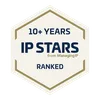Patent searching can be utilised for many different reasons. The reason will depend on the information sought by a particular individual, SME, or large multi-national company, and also what these entities think they will gain from the information returned by the patent search. However, many businesses are unaware of the benefits of patent searching and how a patent search can help strategically support the business.
Thus, patent searching can be a very useful tool when it comes to deciding on whether to file a patent application for a particular invention, or to find out more about a competitor’s patent portfolio, or if there is ambiguity surrounding a potential infringement discovery, or for validity reasons.
The most common type of patent searches can be classified into 4 search groups. These include:
- Landscape searching
- Freedom to operate
- Patentability
- Validity/Invalidity
Landscape search#
In relation to landscape searching, this may be requested by a client if they are looking to enter into a new field of technology and want to know what the patent situation is for that particular technology area. This is a broad search and is a common request for businesses who want to assess the patent landscape and are perhaps looking to develop a new technology and want to see what the patent landscape is before embarking on expensive R&D. The landscape search can be performed for a given country, region or globally depending on the client’s needs.
Freedom to Operate search#
Freedom to operate (FTO) searches are an extension of the landscape search. These are more specific in comparison to a landscape search and are often chosen by clients who may be already established in a particular country, say UK, and want to enter, say, the US market, or maybe want to enter a more specific type of technological area of the market within their current jurisdiction. A FTO search will provide the client with the necessary information to see if entering a new market with a particular technological product or process is a feasible option. As the name suggests this search is assessing whether the client can operate in a particular market place freely without potentially infringing on a competitor’s patent.
Due to the recent COVID pandemic businesses are feeling the squeeze on budgets and as such landscape and FTO searches are on the rise. Spending a little on a landscape or FTO search at the beginning of a project is a valuable asset to a company as it can result in massive savings to the company in the long term, i.e. not wasting money on expensive R&D for ultimately a product the company can’t sell.
Patentability search#
Patentability searching is often used by clients who have an invention, such as a product or process, which they think may be inventive and are looking to see if it is worth protecting such product or process. Patentability searches are similar to the searches performed by the patent offices and look for patents, patent applications, documents, articles, web links, etc, which may disclose all or parts of the invention in order to assess if the invention meets the patentability requirements that are need to obtain patent protection. The main patentability requirements that lead the search are novelty, i.e. is the invention new and not fully disclosed elsewhere, and inventiveness, i.e. is the invention not an obvious modification of something already available in the public. A patentability search may be useful to a client who is unsure if their invention is patentable and does not want to spend money unnecessarily on the preparation of a patent application and paying the required patent office for filing a patent application.
Validity or Invalidity Search#
The final search commonly requested is a validity or invalidity search. As the name suggests the search allows a client to check whether a patent is valid or invalid depending on their position and request. Like the patentability search, the validity or invalidity search is searching for documents which prove or disprove whether a patent meets the patentability requirements, i.e. novel and inventive. An example may be that a client thinks that their competitor’s patent is invalid. Before challenging such a competitor, the client wants to make sure they have the necessary prior art documents to attack the validity of the claims of the competitor’s patent. Therefore, the invalidity search will provide the necessary documents and references to either confirm or refute the invalidity challenge.
Murgitroyd have a dedicated search team providing patent searches covering all of the aforementioned search groups and more. Our patent searching can be tailored to the client’s needs, and as such, each search project will be unique to the client. The Murgitroyd search team is managed by Patent Attorneys, with the team being made up of scientists and engineers who have a STEM background, some of which have PhDs and/or Master degrees. Therefore, the multi-discipline team is well-placed to fully understand the technical areas of each client’s request and their searching needs, resulting in high quality search reports.
If you would like to find out more about what our patent search team can do for you, please don’t hesitate to get in contact.





















